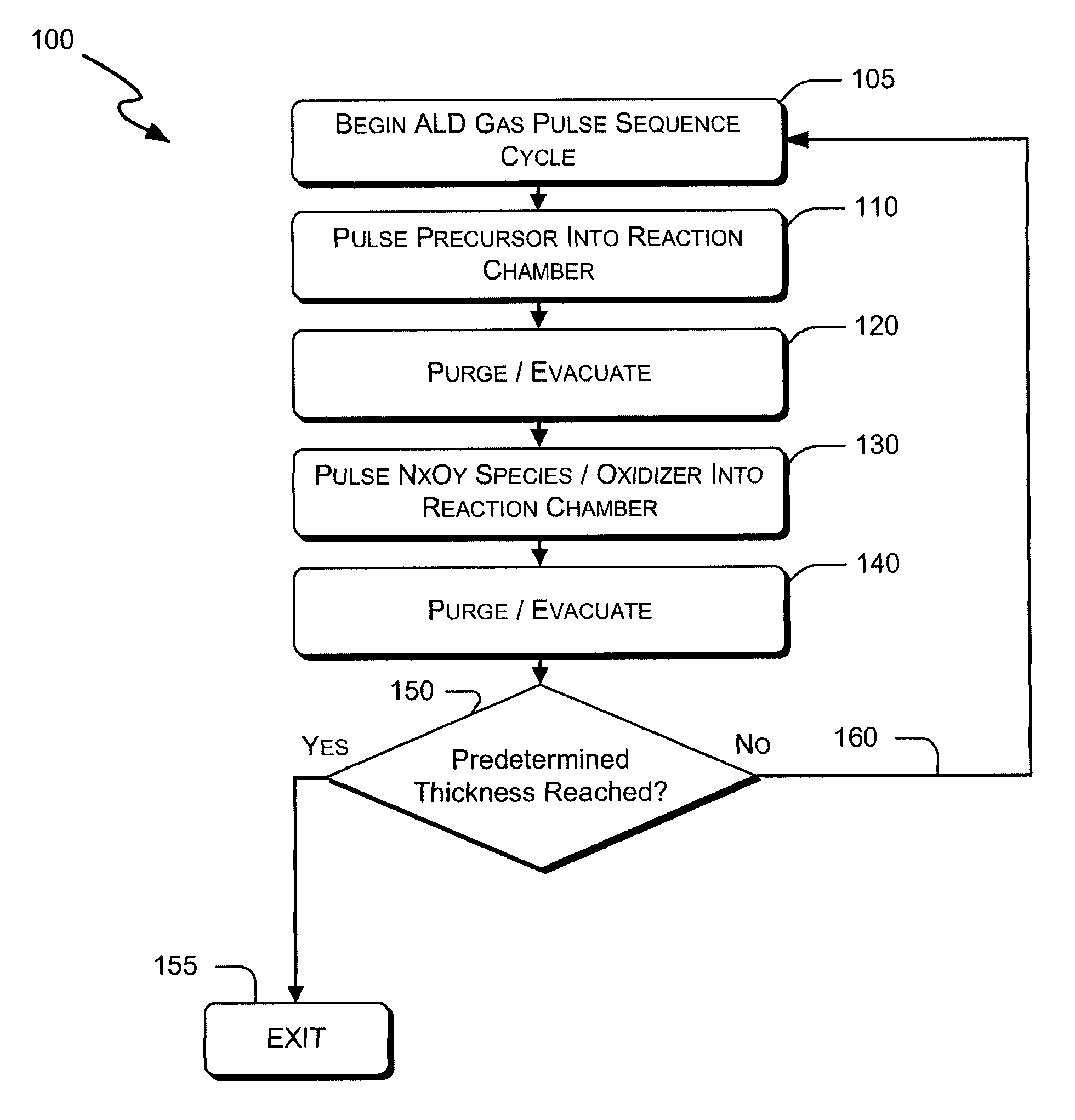Systems and methods for thin-film deposition of metal oxides using excited nitrogen-oxygen species
a technology of metal oxide and excited nitrogen, applied in the field of thin film deposition, can solve the problems of increased leakage current, unsatisfactory effects, and inability to achieve and achieve the effect of controlling leakage current to maintain high speed and low power performan
- Summary
- Abstract
- Description
- Claims
- Application Information
AI Technical Summary
Benefits of technology
Problems solved by technology
Method used
Image
Examples
Embodiment Construction
[0017]One embodiment of the invention includes methods and systems for depositing a metal oxide film such as a hafnium oxide (HfO2), zirconium oxide (ZrO2), lanthanum oxide (La2O3) and / or tantalum oxide (Ta2O5) on a substrate with enhanced deposition efficiency and uniformity. Some embodiments utilize an ALD system in combination with various precursors as explained below in combination with molecular and excited nitrogen-oxygen radical / ionic species (hereinafter referred to as “NxOy species,” where “x” and “y” may constitute any appropriate integers, and which may include excited species such as NO* and N2O*) in possible further combination with oxidizers such as ozone. Embodiments of the invention may also include electronic components and systems that include devices fabricated with methods consistent with the present invention.
[0018]Ozone (O3) is a commonly used oxidant in ALD of various high-k metal oxides. Commercially available ozone delivery systems commonly rely on the diel...
PUM
| Property | Measurement | Unit |
|---|---|---|
| temperature | aaaaa | aaaaa |
| voltage | aaaaa | aaaaa |
| gap distance | aaaaa | aaaaa |
Abstract
Description
Claims
Application Information
 Login to View More
Login to View More - R&D
- Intellectual Property
- Life Sciences
- Materials
- Tech Scout
- Unparalleled Data Quality
- Higher Quality Content
- 60% Fewer Hallucinations
Browse by: Latest US Patents, China's latest patents, Technical Efficacy Thesaurus, Application Domain, Technology Topic, Popular Technical Reports.
© 2025 PatSnap. All rights reserved.Legal|Privacy policy|Modern Slavery Act Transparency Statement|Sitemap|About US| Contact US: help@patsnap.com



